The vessel manufacturing process
PROCESS
World-class reliable quality, inherited traditional techniques
-
Clay kneading
The water content of raw clay is not uniform between the surface and inner parts. Molding the clay as it is may result in defects or cracks, so it is kneaded with a machine called a pug mill, and any air that has entered the clay is completely removed to make the clay sticky.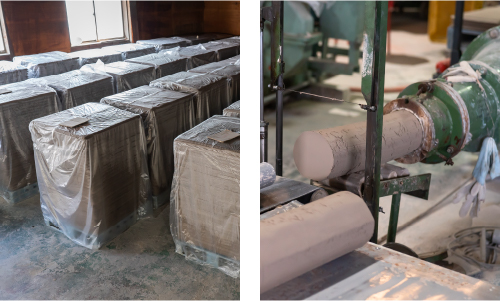
-
Molding
The clay is molded into the shape of a vessel with an automatic molding machine. With an automatic molding machine, it is possible to make various molds and mass-produce them. Other molding methods include slip casting in which mud-like clay is poured into a plaster mold; wheel molding in which clay is stretched and molded while being rotated; and slab building using plate-shaped clay.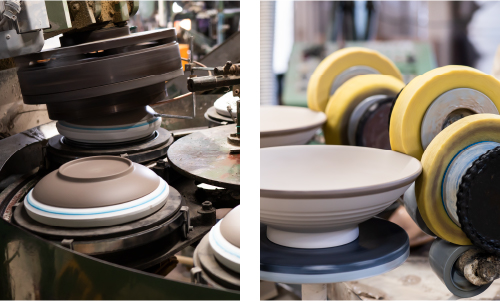
-
Unglazed firing
The unglazed material, molded into various shapes, is dried in a natural dryer to remove its water content, and then fired up in a kiln made for unglazed firing at a low temperature of 800 degrees. This process is performed to burn off the organic matter in the clay, and the main firing process improves the quality, increases the strength of the material, and makes it easier to decorate.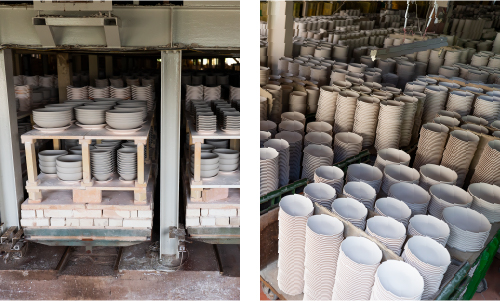
-
Painting
Patterns are added by methods such as pad printing, hand drawing, and screen printing. The colors and patterns are chosen according to the product, and the product’s originality is expressed with a wide range of painting methods, such as the use of shades and lines to express delicacy, and gloss or raised textures for a different style.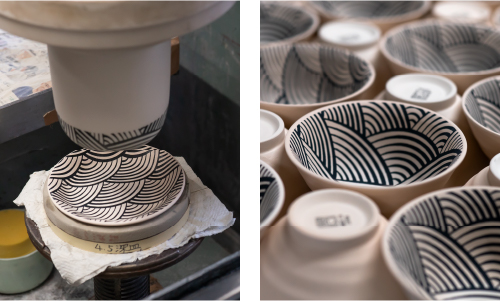
-
Glazing
A glaze of glassy powder dissolved in water is applied to the material before the main firing. The color of the glaze changes greatly depending on the combination of ingredients, and this expresses the various colors and textures of the products. When fired up, they change into a unique and beautiful finish.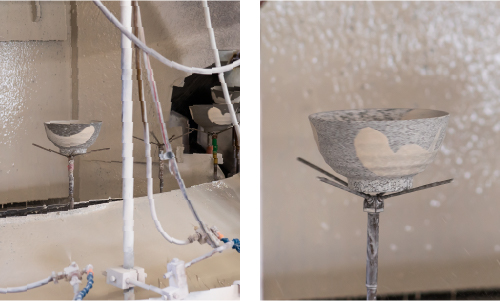
-
Loading kiln
After all the steps leading up to the main firing are completed, the material is positioned into a fire-resistant sagger (made of refractory) so that the vessels do not stick to each other during firing. The saggers are aligned and stacked on carts. Afterwards, the carts are moved automatically in sequence as they enter the tunnel kiln.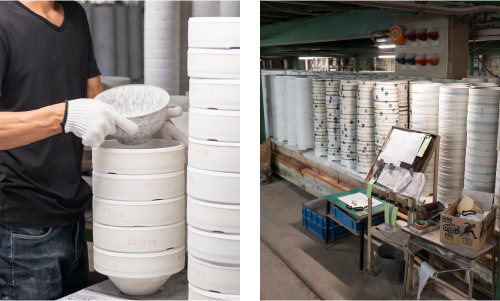
-
Main firing
There are tunnel kilns for mass production and shuttle kilns for high-mix low-volume production, which are fired at a high temperature of about 1300 degrees for 36 hours. The firing process causes the glaze to chemically react to give color and luster, and melt to coat the base material and suppress water absorbency, making it more resistant to cracking and staining.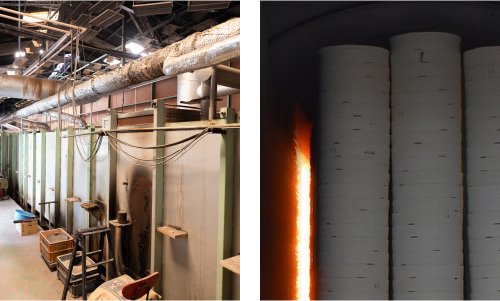
-
Unloading kiln
The products fired in the kiln are taken out.The finished products are picked up and visually inspected one by one.Only the products that meet strict quality standards are delivered to consumers in not only Japan, but around the world.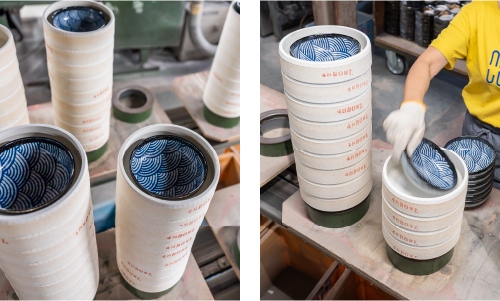
The vessel manufacturing process
The process of making pottery
